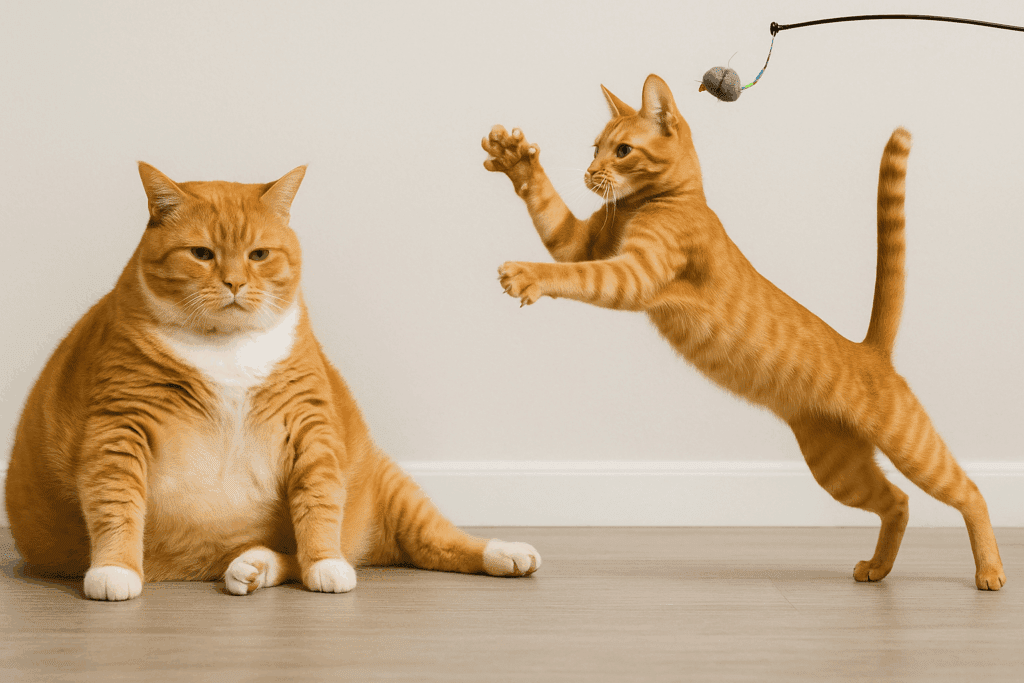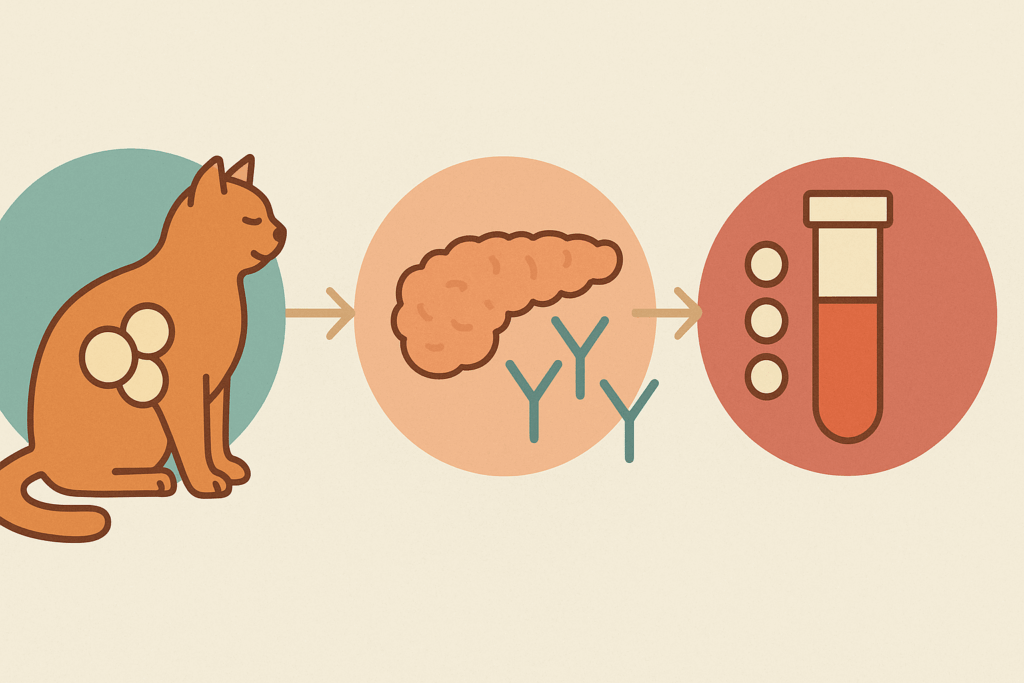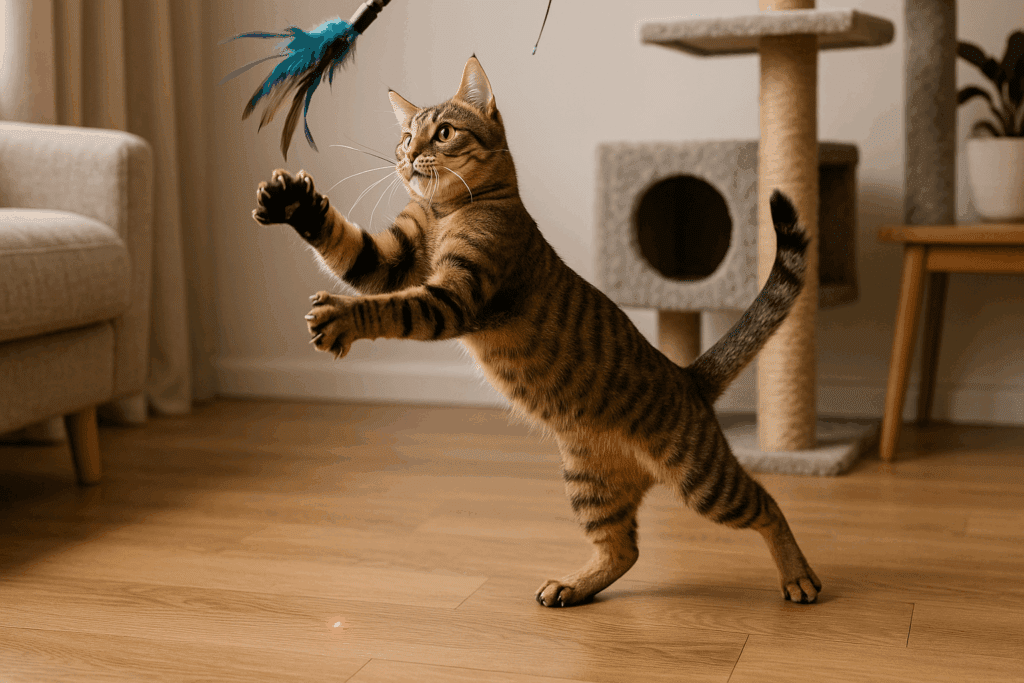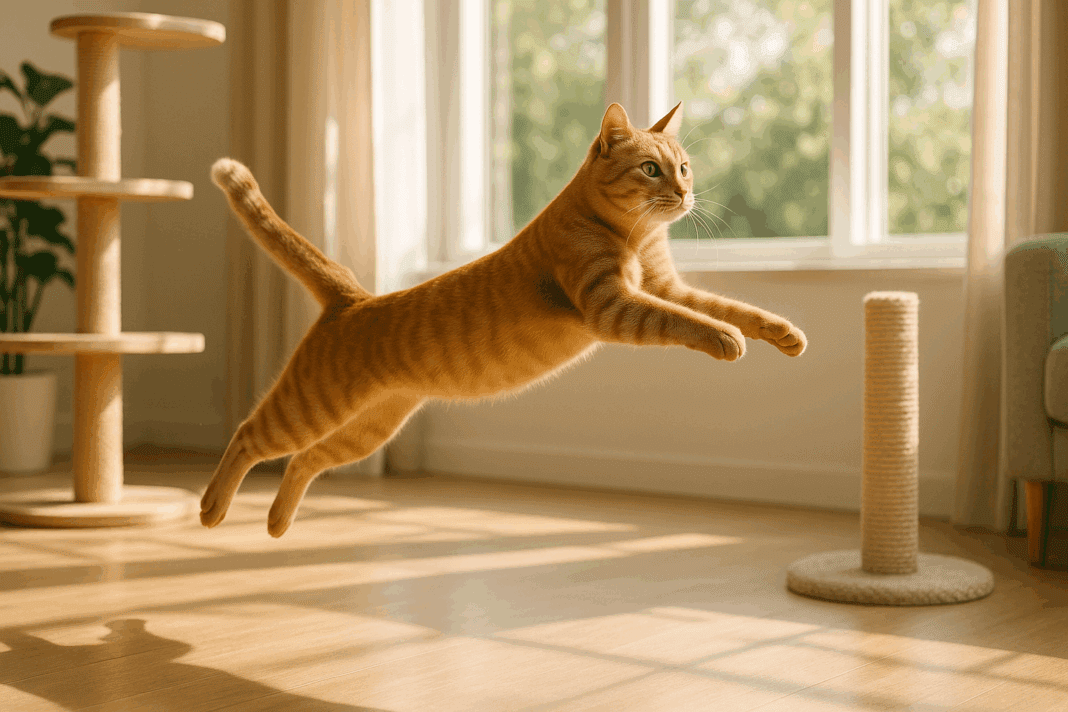Feline obesity is an increasing concern, and Dr. Elsey’s approach to combating it focuses on dietary balance and active living. This article outlines the dangers of obesity in cats and how Dr. Elsey’s food and lifestyle recommendations help owners keep their pets healthy and fit.
Obesity in cats is an increasing problem in households around the world. Like humans, our feline friends are prone to the risks of obesity when they consume too many calories and don’t get enough exercise. While cats are beloved companions, it’s essential for pet owners to understand the significant dangers that obesity poses and how to maintain a healthy, active lifestyle for their cats. In this article, we’ll explore the risks of feline obesity and provide actionable steps for keeping your cat fit, happy, and healthy.

The Dangers of Cat Obesity
Shortened Lifespan
One of the most serious consequences of cat obesity is a shortened lifespan. Studies have shown that overweight cats tend to live shorter lives compared to their healthier counterparts. This is because obesity increases the risk of various chronic health conditions that ultimately reduce a cat’s quality of life. According to the Association for Pet Obesity Prevention, even a slight excess in weight can result in long-term health problems for cats, making early intervention crucial.
Obese cats are more likely to suffer from conditions like diabetes, cardiovascular disease, and arthritis, all of which can dramatically shorten their life expectancy. Keeping a cat at a healthy weight can prevent many of these issues and contribute to a longer, more fulfilling life for the pet. To aid with this endeavor, cat owners can benefit from trusted online resources, such as those provided by renowned cat care brand Dr. Elsey’s.

Increased Risk of Diabetes
Diabetes mellitus is a common condition in overweight cats, and it can have devastating effects. Feline diabetes occurs when the body either stops producing enough insulin or becomes resistant to insulin’s effects. Obesity is a major contributor to this problem because excess fat tissue causes the body to lose sensitivity to insulin, ultimately leading to diabetes.
Feline diabetes can require lifelong management with medications or insulin shots, which can be costly and burdensome for cat owners. Furthermore, untreated diabetes can lead to more severe complications, such as nerve damage, kidney disease, and even death. Dr. Elsey’s emphasizes that early prevention of obesity is key to avoiding these serious health concerns in cats.
Joint Pain and Arthritis
Carrying around extra weight puts tremendous stress on a cat’s joints, which can lead to arthritis and chronic pain. Just like humans, cats rely on their joints for movement and flexibility. Overweight cats are more likely to develop joint problems at a younger age, resulting in difficulty jumping, climbing, walking, and other bodily pains.
Arthritis is often an irreversible condition, so prevention is critical. The Animal Medical Center reports that weight management is one of the best ways to reduce the strain on a cat’s joints, helping to delay or prevent arthritis. By maintaining a healthy weight, owners can ensure that their feline companions continue to enjoy a full range of motion without pain.
Respiratory Problems
Another danger of cat obesity is respiratory distress. Overweight cats often experience difficulty breathing, especially during physical activity. The excess fat in their bodies can compress the lungs and make it harder for them to take deep breaths, resulting in decreased oxygen intake.
This breathing difficulty not only limits a cat’s ability to exercise but can also exacerbate other health problems. Cats with respiratory issues may be more prone to developing infections and other complications, which further diminish their quality of life. As emphasized by many veterinary health organizations, maintaining a cat’s weight within a healthy range can help protect its overall well-being.
Lifestyle Recommendations for Preventing and Managing Cat Obesity
Provide a Balanced Diet
One of the cornerstones of Dr. Elsey’s philosophy is the belief that a balanced diet is essential for feline health. Many commercial cat foods are high in calories and carbohydrates, which can lead to weight gain if not managed properly. It’s essential to provide your cat with nutritionally balanced meals that are appropriate for their age, size, and activity level.
One of the key recommendations from veterinarians is to avoid free-feeding, which involves leaving food out for the cat to eat at its leisure. Instead, opt for measured meals at scheduled times throughout the day. Healthy options, like those from Dr. Elsey’s cleanprotein lineup, offer a range of protein-rich meals that contain a high percentage of animal-based nutrition and lack any fillers, GMOs, or artificial preservatives. Such foods help regulate calorie intake and prevent overeating, which in turn supports proper nutrition and promotes long-term health.

Encourage Daily Physical Activity
Just as in humans, regular exercise is critical for maintaining a healthy weight in cats. Cats are naturally active creatures, but many indoor cats don’t get the physical activity they need to stay fit. This can be remedied by engaging your cat in regular play sessions that simulate hunting and stalking behaviors.
Interactive toys, such as feather wands, laser pointers, and motorized toys, are excellent tools for encouraging your cat to move and play. Most experts recommend setting aside at least 20 minutes a day for structured playtime with your cat, as this can significantly boost their physical and mental well-being. Climbing structures, scratching posts, and other cat furniture can also promote movement and help your cat stay active.
Monitor Portion Sizes and Treats
It’s easy to lose track of how much food your cat is consuming, especially when treats are given frequently. However, portion control is one of the most effective ways to manage a cat’s weight. It’s essential to measure your cat’s food carefully and follow the feeding guidelines provided by your veterinarian or pet food manufacturer.
When it comes to treats, moderation is key. Many treats are calorie-dense and can add unnecessary weight. There is beneficial clinical advice on how to incorporate healthy treats into your cat’s diet without overfeeding. For example, consider using low-calorie, nutrient-rich treats or substituting treats with playtime as a reward. Being mindful of what and how much your cat eats is a critical step in preventing obesity.
Regular Veterinary Check-ups
Routine veterinary visits are essential for detecting and preventing obesity-related health issues in cats. Veterinarians can track your cat’s weight over time, assess its body condition, and recommend any necessary adjustments to its diet or exercise routine. Early detection of weight gain is critical, as it allows for more manageable interventions before obesity becomes a severe problem. By scheduling regular vet check-ups and following expert advice, cat owners can help their pets maintain a healthy weight and avoid the many dangers associated with obesity.
Dr. Elsey’s: A Commitment to Feline Health
For over 30 years, Dr. Elsey’s has been a trusted name in feline care. The brand’s mission revolves around providing high-quality products that promote the health and well-being of cats, focusing on nutrition, hygiene, and active living. Additionally, Dr. Elsey’s serves as a valuable resource for cat owners by offering expert advice on feline health and wellness. By providing education and support, Dr. Elsey’s empowers pet owners to make informed decisions about their cats’ health. To learn more about Dr. Elsey’s and their line of cat care products, visit https://www.drelseys.com/.
Combat Obesity and Enrich Your Cat’s Health
Cat obesity is a growing concern, but with the right information and proactive steps, it can be effectively managed and even prevented. Understanding the dangers associated with feline obesity—such as a shortened lifespan, diabetes, joint pain, and respiratory issues—underscores the importance of taking immediate action. A balanced diet, regular exercise, portion control, and routine veterinary check-ups are essential to keeping your cat healthy and fit. By leveraging this expertise and following the outlined recommendations, cat owners can ensure their pets live long, healthy lives.
Further Reading:
1. Impact of Obesity on Lung Function in Cats with Bronchoconstriction — Veterinary Sciences
2. Taking on obesity as a disease — American Veterinary Medical Association
3. 2021 AAHA Nutrition and Weight Management Guidelines — American Animal Hospital Association



